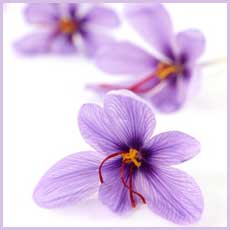History of Saffron
Saffron is believed to have spread about from Crete to different parts of Europe. This is because of the wall paintings dated back in 2000 - 1550 BC that depict people gathering or harvesting saffron. These wall paintings can be found in the Palace of Knossos in Crete. In addition to this, saffron is also present in certain medical books dating back to 1500 BC as being referred to as the potency-enhancing plant.
Saffron is often synonymous with myrrh, cinnamon and frankincense. However, this spice was also used in ancient times as a cure to cataracts. Others even preferred to use saffron as an odor-neutralizer or as a way to distribute food colors.
The Romans learned about Saffron from the Greeks. And during those times in Rome, saffron was considered to be a luxury item. However, the interest for saffron waned when the Roman Empire fell. In the middle ages, it was once again revived and used as a spice and also as a medicinal cure.
Since the 10th century, the first country to have cultivated Saffron was Spain. From this time, saffron was then regarded as the spice for royalty. Countries that followed Spain's footsteps in cultivating the plant were Italy, Southern France and other countries in Central Europe gradually added themselves to the select areas cultivating this amorous spice.
